Avoiding an accident is actually pretty easy – because most “accidents” aren’t.
They are the result of mistakes.
In other words, avoidable things.
Here are a few common mistakes that can lead to an “accident.”
Too much speed, not enough space –
The driving public has been hectored for generations that “speed” is bad – “speed” defined as any velocity above that specified by a speed limit sign. This is gassy, arbitrary nonsense, as everyone knows – including speed cops and traffic courts.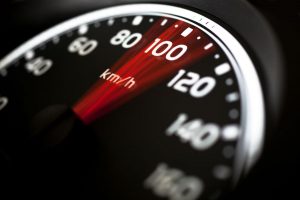
What’s dangerous – at least potentially – is too much speed for the space available.
On an open highway, on a nice clear day, it might be reasonable and prudent (as the saying goes) to drive 100 MPH or even faster – no matter what the sign by the side of the road says. Those signs are analogous to the No Swimming Unless Lifeguard is Present signs one sometimes sees beside a motel’s pool. If you can swim, there’s no reason not to – at least in terms of your safety.
The sign is there for liability reasons – to immunize the pool’s owner from being sued if someone who can’t swim attempts to go for one and drowns.
Speed limit signs are there for the same reason. They assume general incompetence – and mulct the competent.
But it may not be reasonable or prudent at all to drive even 25 on the same highway in a howling snowstorm in the middle of the night – regardless of the legal speed limit.
Decreased traction – and limited visibility – impose speed limits that are physical rather than legal.
Ignore these limits at your peril.
PS: Tailgating is a sub-species of too much speed – and not enough space. The problem isn’t your speed. It’s that you won’t have sufficient space to shed your speed in time if the driver ahead of you suddenly reduces his speed.
Turning Too Much – or Not Enough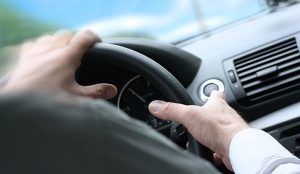
This is a mistake people sometimes make in the curves. Turn too much relative to the curve of the road and the car may cross over the double yellow, into the other lane of traffic – which creates a possible issue resulting from two objects attempting to occupy the same physical space simultaneously.
A secondary problem is the over-correction that sometimes ensues. The driver, realizing he has crossed the double yellow, abruptly jerks the steering wheel in the opposite direction, in order to get the car back in its lane – and out of the path of the pair of oncoming headlights.
The same basic problem arises when the driver doesn’t turn enough as he enters a curve, especially one with a decreasing outside radius.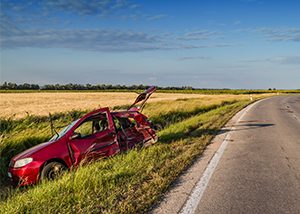
He notices the car tracking toward the shoulder – perhaps he’s already drifted onto it – over-reacts, jerks the wheel hard (and too far) in the other direction.
Sudden, abrupt steering inputs are always dangerous but the danger increases when the car is attempting to trace a curve. Traction is already less than it would be if the car were traveling in a straight line because of weight shifting toward the outside of the curve – and it’s easier to lose control due to sudden/excessive steering (or braking) inputs.
Compounding the problem, you have less space cushion to make up for your mistake – because inertia is already carrying the car in the direction you don’t want to go: Off the road – or into the other lane of travel.
Try to avoid any abrupt control inputs – whether steering or braking.
The safest drivers are smooth drivers.
The Safety Cult teaches that one should always accelerate gradually, as if there were a baby’s fontanel under the pedal. They actually teach kids this dangerous nonsense in school.
It’s a great way to create an “accident” – as by gently accelerating from a merge lane onto a highway and into the path of an eighteen-wheeler moving at highway speeds. Or via the notorious cruise control pass – gimping glacially past a car doing 49 at in a 55 at 55 miles-per-hour.
Because t go any faster would be (of course) be “speeding.”
No matter that it’s the safest way to execute a pass because it reduces the amount of time your car spends driving in the wrong lane.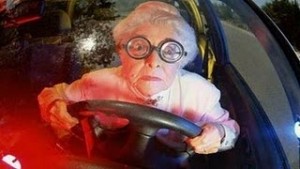
Not infrequently, another car appears in the opposite lane while the slow-motion pass is in progress. Now the passing (or trying to) driver must either accelerate very aggressively, in order to get around the car and back into the right lane of travel before the oncoming car closes the gap – or brake aggressively, to get back in line behind the car he was trying to pass.
Neither being what might called safe.
Once upon a time, car companies touted the passing gear performance of their new cars – and today’s cars have more passing power than ever. But it’s never discussed and used just as infrequently, out of fear of arousing the fury of the Safety Cult.
But the Safety Cult is dead wrong on this and many other things.
Expecting other drivers (especially eighteen wheelers) to slow/brake to accommodate you is a very good way to have an “accident.”
Sometimes, flooring it is the safest thing to do.
. . .
Got a question about cars – or anything else? Click on the “ask Eric” link and send ’em in!
If you like what you’ve found here please consider supporting EPautos.
We depend on you to keep the wheels turning!
Our donate button is here.
If you prefer not to use PayPal, our mailing address is:
EPautos
721 Hummingbird Lane SE
Copper Hill, VA 24079
PS: Get an EPautos magnet (pictured below) in return for a $20 or more one-time donation or a $5 or more monthly recurring donation. (Please be sure to tell us you want a sticker – and also, provide an address, so we know where to mail the thing!)
My latest eBook is also available for your favorite price – free! Click here. 


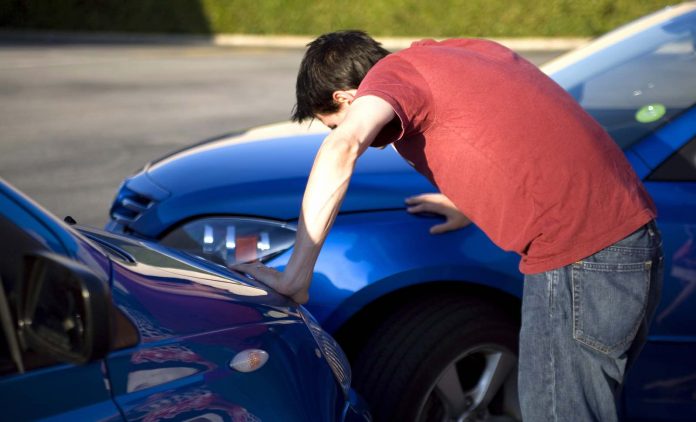










My wife sees and recognizes threats (to mean other cars) on the road. However, what she doesn’t understand, and what grinds my gears (pun intended) is that the threat *behind you* is no longer a threat to you. She’ll hang back 100’s of yards and poke along with a guy who is going so slow as to create a traffic hazard, rather than punch it and get the hell outta there!
“Try to avoid any abrupt control inputs – whether steering or braking.”
On a curve, yes. In a straight line — if you’ve got ABS, jam that brake pedal as hard as needed to avoid a collision if someone does something really stupid in front of you.
Some things that other people do are just unavoidable.
Back in the 60’s, I lived in an apartment 🙁 in Queens (borough of NYC) which had a good view of a simple intersection of a one-way side street and a 2-way lightly traveled avenue, at which the side street had a stop sign and the avenue didn’t.
Despite the very low volume of traffic there, there was an accident at that intersection virtually every week. I think that seeing this really helped me to understand human behavior and to be a better driver, because there was absolutely no reason for there to ever be an accident at that intersection; the only reason that there were constant accidents, is because people would come to the stop- and rather than creeping up to get a good view (Wide sidewalks with wall-to-wall parked cars) which can take a few seconds- they’d stop; look; and if they didn’t have a clear view, just pull out…often right into the path of another car that was coming down the avenue. (Once it was a motorcycle whom they pulled out in front of- the poor rider went flying about 100′ and landed on a wrought iron fence!)
Then there was the Polak on Long Island….who came to a stop….thought it was a four-way (it wasn’t!) and pulled right out in front of me. My only accident. Didn’t even have time to hit my brakes! I walked away, but my truck was totaled (Good thing us Dagos have hard heads- my head broke out the side window….and they’re not easy to break! I got a scratch.)
Then there are people like my sister: “My neck was stiff, so I couldn’t turn my head to see if anyone was coming; so I just went for it, and almost got creamed!” 🙁
Between the idiots, and the distracted drivers/cars with touchscreens & many blind spots, and all sorts of bells and whistles constantly being a distraction, it’s getting scary out there when you have to drive in populated areas.
Uh, that should read “back in the 80’s”- not the 60’s…..
Instead of tailgating a clover, or better yet a pack of 5 clovers, create your own space. A quarter mile or so is appropriate. When a passing zone is under a mile away, floor it. The goal is to be going at least 25mph faster than your pass victim BEFORE YOU PULL OUT. Time it perfectly and you swerve out just as the last oncoming car goes by and also just as you were about to spectacularly rear end your victim. With flawless execution the most gutless car can pass three or four 18 wheelers in only 2-3 seconds for each one.
That is the correct way to pass. Instead, what everyone does is tailgate, pull out to pass going exactly the same speed, then floor it, then accelerate for 10 seconds, then everyone in the passing car the passed car and the oncoming car scream.
There is a true art to this. Many times I have trapped myself behind some clover going too slow and tailgating. I have robbed myself of vision and acceleration space to pass this person on two lane roads. Sometimes you really are trapped as if you try to slow down to give space to rev up, the guy behind you takes it as a green light to pass you and move behind the clover ahead.
Speed doesn’t cause accidents – inattentiveness and lack of skill do.
The first one gets you into trouble, and the second one keeps you there.